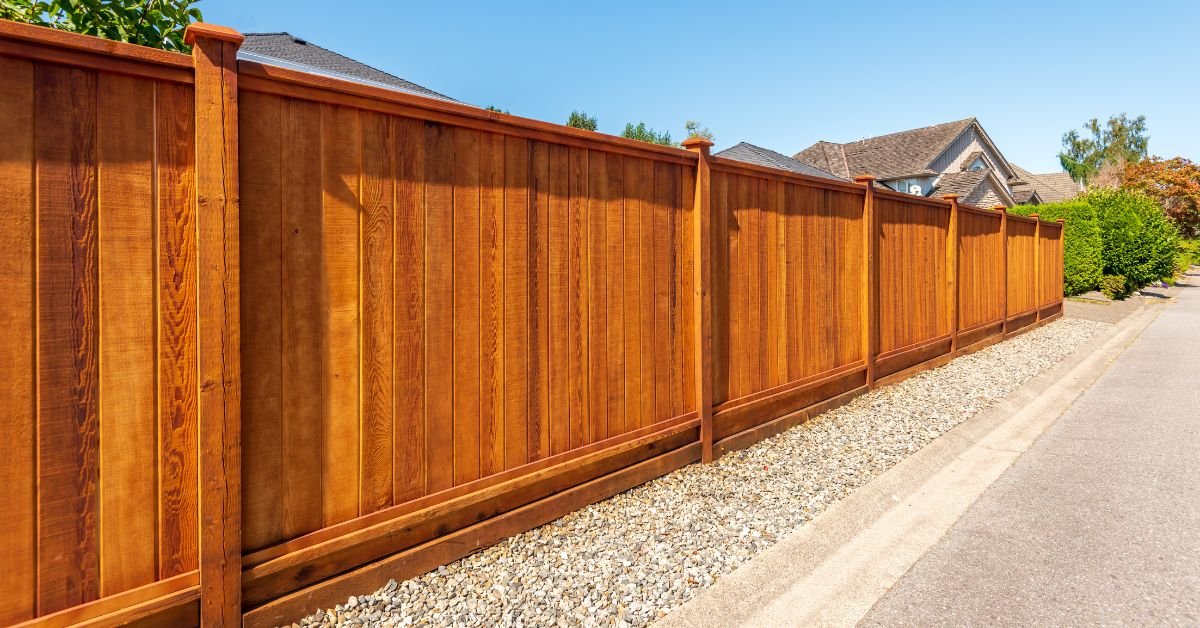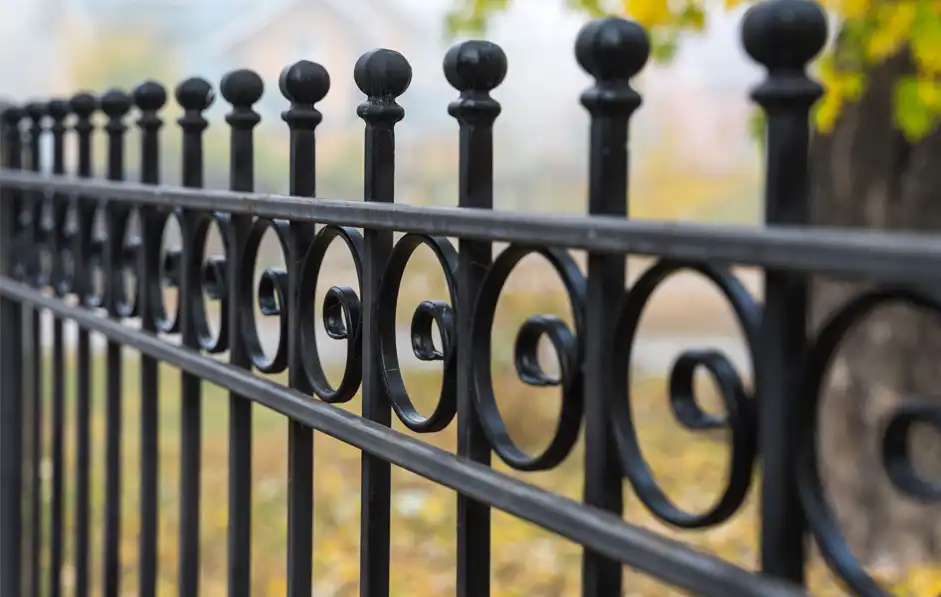All Categories
Featured
Selecting environmentally liable fencing products aids decrease your carbon footprint and sustains preservation initiatives. Let's explore some of the ideal green fencing options that promote sustainability while additionally supplying sturdiness and style.
Benefits: Bamboo calls for marginal water, chemicals, and fertilizers to grow. It is naturally degradable, lowering waste at the end of its life process. It is immune and likewise durable to rot, making sure long life with appropriate treatment. Considerations: Bamboo may not be optimal for locations with rough winters or extreme cool, as it can come to be weak and fracture in freezing temperature levels. 2. Recycled Materials Fencing. Fences made from recycled products, such as post-consumer plastics, recovered timber, or recycled metal, are becoming increasingly popular in eco-conscious layouts. These materials lower waste, preserve sources, and minimize the requirement for the extraction of raw materials, which is valuable for the setting. By repurposing existing materials, you add to decreasing the demand for new, energy-intensive manufacturing processes.
Conveniences: Making use of recycled materials aids draw away waste from landfills, minimizes environmental influence, and can lower your carbon impact. It is additionally an affordable remedy in some instances. Factors to consider: The visual of recycled material fencings can vary, and some may not achieve the very same natural appearance as traditional timber fences. Many makers currently supply styles that replicate the look of timber or stone. 3. Compound Secure fencing. Compound fence is made from a mixture of wood fibers and plastic, typically sourced from recycled web content. This kind of fence provides the appearance of wood with marginal upkeep, while additionally being eco-friendly. Composite products are immune and commonly resilient to the components, minimizing the demand for regular replacement or treatment with chemicals.
![]()
Perks: Compound fencings are long lasting, low-maintenance, and can be made from recycled material, assisting decrease waste. They do not need dangerous chemicals for conservation, unlike treated timber. Factors to consider: While composite fence is sturdy, it has a tendency to be much more pricey upfront compared to standard timber. Nonetheless, its durability and low upkeep may make it a more cost-effective option over time. 4. Cedar and Redwood Fence. Cedar and redwood are preferred options for environmentally-conscious fencing, as both products are naturally durable, resistant to decay, and need marginal chemical therapies. These timbers can be sustainably harvested from properly handled woodlands, ensuring their green condition. They likewise have a natural beauty that many house owners value, with rich colors and textures that enhance aesthetic charm.
Conveniences: Cedar and redwood fences are resilient, normally pest-resistant, and have a low environmental influence when gathered sustainably. They also have a timeless visual and can blend effortlessly into all-natural landscapes. Considerations: While cedar and redwood are more eco-friendly than various other types of wood, they are still wood items and require proper maintenance to avoid decay. The price may likewise be greater contrasted to other products. 5. Living Fencings (Hedges and Bushes) For those seeking an extra all-natural and environment-friendly alternative, living fences, or hedgerows, are an exceptional choice. Popular options for living fencings consist of bamboo, boxwood, and privet.
Advantages: Living fences enhance air quality, add to biodiversity, and provide an all-natural appearance that blends seamlessly with the landscape. They additionally decrease sound pollution and assist manage temperatures in your backyard. Factors to consider: Living fences require routine upkeep, such as trimming and watering, and may not appropriate for each environment. They also call for time to develop before they can give complete personal privacy. 6. Rock and Brick Fencing (Reclaimed) Rock and block are exceptionally sturdy products, and utilizing recovered rock or block can be an eco-friendly method to build a fencing. By recycling these products from old buildings or frameworks, you lower the demand for new sources and lessen waste. Rock and brick fences are strong, call for little upkeep, and supply a timeless want to any type of building.
![]()
Perks: Redeemed stone and block fencings are extremely resilient, low-maintenance, and supply outstanding privacy and safety and security. They are also energy-efficient, as they assist regulate temperature by working as all-natural insulators. Factors to consider: Installment of stone and brick fences can be much more pricey and labor-intensive than other products. In addition, these fencings may not be appropriate for all homes because of the weight and the demand for proper installment. Verdict. Bamboo, recycled products, composite fence, and cedar or redwood all supply sustainable choices to standard materials. By selecting one of these lasting fence materials, you're making a favorable influence on the atmosphere while creating a beautiful and functional outdoor area.
- Bamboo Secure fencing. Bamboo is just one of the most green products readily available for fencing. As one of the fastest-growing plants in the world, bamboo is incredibly sustainable, able to grow back promptly after being gathered. Unlike wood trees, which can take decades to mature, bamboo gets to full development in simply a few years, making it an excellent sustainable alternative. Bamboo fencings are strong, naturally resistant to insects, and give an attractive, natural visual.
Benefits: Bamboo calls for marginal water, chemicals, and fertilizers to grow. It is naturally degradable, lowering waste at the end of its life process. It is immune and likewise durable to rot, making sure long life with appropriate treatment. Considerations: Bamboo may not be optimal for locations with rough winters or extreme cool, as it can come to be weak and fracture in freezing temperature levels. 2. Recycled Materials Fencing. Fences made from recycled products, such as post-consumer plastics, recovered timber, or recycled metal, are becoming increasingly popular in eco-conscious layouts. These materials lower waste, preserve sources, and minimize the requirement for the extraction of raw materials, which is valuable for the setting. By repurposing existing materials, you add to decreasing the demand for new, energy-intensive manufacturing processes.
Conveniences: Making use of recycled materials aids draw away waste from landfills, minimizes environmental influence, and can lower your carbon impact. It is additionally an affordable remedy in some instances. Factors to consider: The visual of recycled material fencings can vary, and some may not achieve the very same natural appearance as traditional timber fences. Many makers currently supply styles that replicate the look of timber or stone. 3. Compound Secure fencing. Compound fence is made from a mixture of wood fibers and plastic, typically sourced from recycled web content. This kind of fence provides the appearance of wood with marginal upkeep, while additionally being eco-friendly. Composite products are immune and commonly resilient to the components, minimizing the demand for regular replacement or treatment with chemicals.

Perks: Compound fencings are long lasting, low-maintenance, and can be made from recycled material, assisting decrease waste. They do not need dangerous chemicals for conservation, unlike treated timber. Factors to consider: While composite fence is sturdy, it has a tendency to be much more pricey upfront compared to standard timber. Nonetheless, its durability and low upkeep may make it a more cost-effective option over time. 4. Cedar and Redwood Fence. Cedar and redwood are preferred options for environmentally-conscious fencing, as both products are naturally durable, resistant to decay, and need marginal chemical therapies. These timbers can be sustainably harvested from properly handled woodlands, ensuring their green condition. They likewise have a natural beauty that many house owners value, with rich colors and textures that enhance aesthetic charm.
Conveniences: Cedar and redwood fences are resilient, normally pest-resistant, and have a low environmental influence when gathered sustainably. They also have a timeless visual and can blend effortlessly into all-natural landscapes. Considerations: While cedar and redwood are more eco-friendly than various other types of wood, they are still wood items and require proper maintenance to avoid decay. The price may likewise be greater contrasted to other products. 5. Living Fencings (Hedges and Bushes) For those seeking an extra all-natural and environment-friendly alternative, living fences, or hedgerows, are an exceptional choice. Popular options for living fencings consist of bamboo, boxwood, and privet.
Advantages: Living fences enhance air quality, add to biodiversity, and provide an all-natural appearance that blends seamlessly with the landscape. They additionally decrease sound pollution and assist manage temperatures in your backyard. Factors to consider: Living fences require routine upkeep, such as trimming and watering, and may not appropriate for each environment. They also call for time to develop before they can give complete personal privacy. 6. Rock and Brick Fencing (Reclaimed) Rock and block are exceptionally sturdy products, and utilizing recovered rock or block can be an eco-friendly method to build a fencing. By recycling these products from old buildings or frameworks, you lower the demand for new sources and lessen waste. Rock and brick fences are strong, call for little upkeep, and supply a timeless want to any type of building.

Perks: Redeemed stone and block fencings are extremely resilient, low-maintenance, and supply outstanding privacy and safety and security. They are also energy-efficient, as they assist regulate temperature by working as all-natural insulators. Factors to consider: Installment of stone and brick fences can be much more pricey and labor-intensive than other products. In addition, these fencings may not be appropriate for all homes because of the weight and the demand for proper installment. Verdict. Bamboo, recycled products, composite fence, and cedar or redwood all supply sustainable choices to standard materials. By selecting one of these lasting fence materials, you're making a favorable influence on the atmosphere while creating a beautiful and functional outdoor area.
Latest Posts
Check Out Brake Repair & More: Comprehensive Auto Care Solutions from Montclare Auto Repair
Published May 28, 25
1 min read
Unlock WyHy Federal Credit Union – Wyoming’s Best Banking Choice for Your Money Goals
Published May 26, 25
1 min read
Join Your Financial Partner at WyHy – Top Benefits for Your Goals
Published May 25, 25
1 min read
More
Latest Posts
Check Out Brake Repair & More: Comprehensive Auto Care Solutions from Montclare Auto Repair
Published May 28, 25
1 min read
Unlock WyHy Federal Credit Union – Wyoming’s Best Banking Choice for Your Money Goals
Published May 26, 25
1 min read
Join Your Financial Partner at WyHy – Top Benefits for Your Goals
Published May 25, 25
1 min read